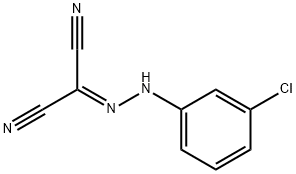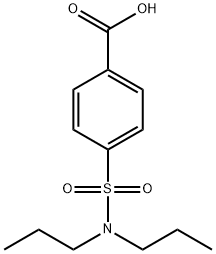DECYLUBIQUINONE
Synonym(s):2,3-Dimethoxy-5-methyl--6-decyl-1,4-benzoquinone
- CAS NO.:55486-00-5
- Empirical Formula: C19H30O4
- Molecular Weight: 322.44
- MDL number: MFCD00083306
- SAFETY DATA SHEET (SDS)
- Update Date: 2023-06-08 09:02:49

What is DECYLUBIQUINONE?
Description
Decylubiquinone (55486-00-5) inhibits the Ca2+?dependent mitochondrial permeability transition pore (MPTP) without inhibiting respiration.1?Maximum effect on Ca2+?retention capacity of rat liver mitochondria at 100 μM. Inhibits etoposide-induced apoptosis in in L929 cells at 5 μM via inhibition of cytochrome C release.2?Delays rotenone-induced cardiac dysfunction in a zebrafish model of development and cardiovascular function.3?Substrate for various quinone oxidoreductases.4,5
The Uses of DECYLUBIQUINONE
Decylubiquinone is inhibits the Ca2+-dependent mitochondrial permeability transition pore (MPTP) and also inhibits etoposide-induced apoptosis.
What are the applications of Application
Decylubiquinone is inhibits the Ca2+-dependent mitochondrial permeability transition pore (MPTP) and also inhibits etoposide-induced apoptosis
Definition
ChEBI: 6-decylubiquinone is a member of the class of 1,4-benzoquinones that is 2,3-dimethoxybenzoquinone which has been substituted at positions 5 and 6 by decyl and methyl groups. It has a role as a cofactor. It is functionally related to a 6-decylubiquinol.
General Description
Ubiquinone analog.
References
1) Fontaine?et al. (1998),?A Ubiquinone-binding Site Regulates the Mitochondrial Permeability Transition Pore; J. Biol. Chem.,?273?25734 2) Karpinich?et al. (2002),?The course of Etoposide-Induced Apoptosis from Damage to DNA and p53 Activation to Mitochondrial Release of Cytochrome c; J. Biol. Chem.,?277?16547 3) Pinho?et al. (2013)?How mitochondrial dysfunction affects zebrafish development and cardiovascular function: an in vivo model for testing mitochondria-targeted drugs; Br. J. Pharmacol.,?169?1072 4) Kunow?et al.?(1994)?F420H2: quinone oxidoreductase from Archaeoglobus fulgidus. Characterization of a membrane-bound multisubunit complex containing FAD and iron-sulfur clusters; Eur. J. Biochem.,?223?503 5) Zickermann?et al?(1998)?Analysis of the pathogenic human mitochondria mutation ND1/3460 and mutations of strictly conserved residues in it’s vicinity, using the bacterium Paracoccis denitrificans; Biochemistry,?37?11792
Properties of DECYLUBIQUINONE
| Boiling point: | 452.9±45.0 °C(Predicted) |
| Density | 1.02±0.1 g/cm3(Predicted) |
| storage temp. | -20°C |
| solubility | Soluble in DMSO (up to 10 mg/ml) |
| form | Neat yellow to orange colored oil. |
| color | Yellow or orange |
| Stability: | Stable for 1 year from date of purchase as supplied. Solutions in DMSO may be stored at -20°C for up to 1 month. |
Safety information for DECYLUBIQUINONE
| Signal word | Warning |
| Pictogram(s) |
 Exclamation Mark Irritant GHS07 |
| GHS Hazard Statements |
H302:Acute toxicity,oral H315:Skin corrosion/irritation H319:Serious eye damage/eye irritation H335:Specific target organ toxicity, single exposure;Respiratory tract irritation |
| Precautionary Statement Codes |
P261:Avoid breathing dust/fume/gas/mist/vapours/spray. P305+P351+P338:IF IN EYES: Rinse cautiously with water for several minutes. Remove contact lenses, if present and easy to do. Continuerinsing. |
Computed Descriptors for DECYLUBIQUINONE
New Products
4-Fluorophenylacetic acid 4-Methylphenylacetic acid N-Boc-D-alaninol N-BOC-D/L-ALANINOL Tert-butyl bis(2-chloroethyl)carbamate 3-Morpholino-1-(4-nitrophenyl)-5,6-dihydropyridin- 2(1H)-one Furan-2,5-Dicarboxylic Acid Tropic acid S-2-CHLORO PROPIONIC ACID ETHYL ISOCYANOACETATE 2-Bromo-1,3-Bis(Dimethylamino)Trimethinium Hexafluorophosphate (6-METHYL-[1,3]DITHIOLO[4,5-b]QUINOXALIN-2-ONE INDAZOLE-3-CARBOXYLIC ACID 4-IODO BENZOIC ACID (2-Hydroxyphenyl)acetonitrile 4-Bromopyrazole 5,6-Dimethoxyindanone 2-(Cyanocyclohexyl)acetic acid 4-methoxy-3,5-dinitropyridine 2-aminopropyl benzoate hydrochloride 1-(4-(aminomethyl)benzyl)urea hydrochloride diethyl 2-(2-((tertbutoxycarbonyl)amino) ethyl)malonate tert-butyl 4- (ureidomethyl)benzylcarbamate Ethyl-2-chloro((4-methoxyphenyl)hydrazono)acetateRelated products of tetrahydrofuran








You may like
-
 Decylubiquinone CAS 55486-00-5View Details
Decylubiquinone CAS 55486-00-5View Details
55486-00-5 -
 2033-24-1 98%View Details
2033-24-1 98%View Details
2033-24-1 -
 1975-50-4 98%View Details
1975-50-4 98%View Details
1975-50-4 -
 2-HYDROXY BENZYL ALCOHOL 98%View Details
2-HYDROXY BENZYL ALCOHOL 98%View Details
90-01-7 -
 2-Chloro-1,3-Bis(Dimethylamino)Trimethinium Hexafluorophosphate 221615-75-4 98%View Details
2-Chloro-1,3-Bis(Dimethylamino)Trimethinium Hexafluorophosphate 221615-75-4 98%View Details
221615-75-4 -
 61397-56-6 CIS BROMO BENZOATE 98%View Details
61397-56-6 CIS BROMO BENZOATE 98%View Details
61397-56-6 -
 14714-50-2 (2-Hydroxyphenyl)acetonitrile 98+View Details
14714-50-2 (2-Hydroxyphenyl)acetonitrile 98+View Details
14714-50-2 -
 118753-70-1 98+View Details
118753-70-1 98+View Details
118753-70-1